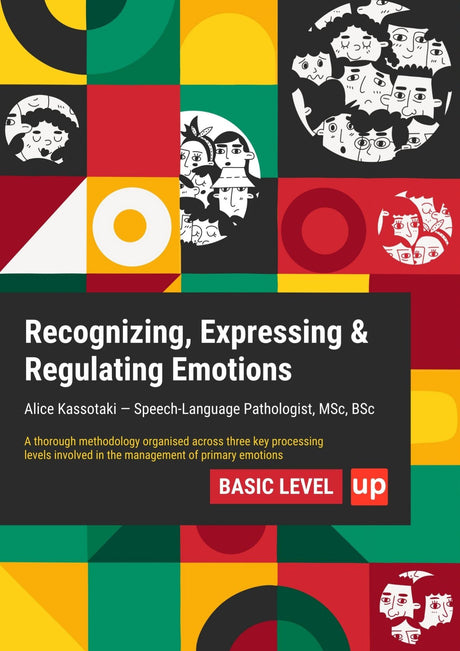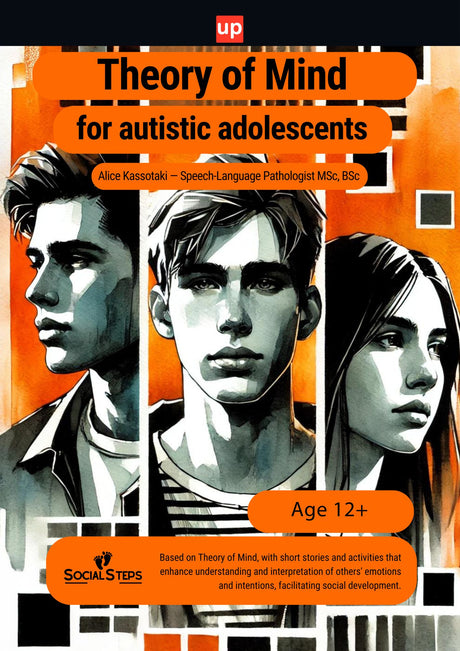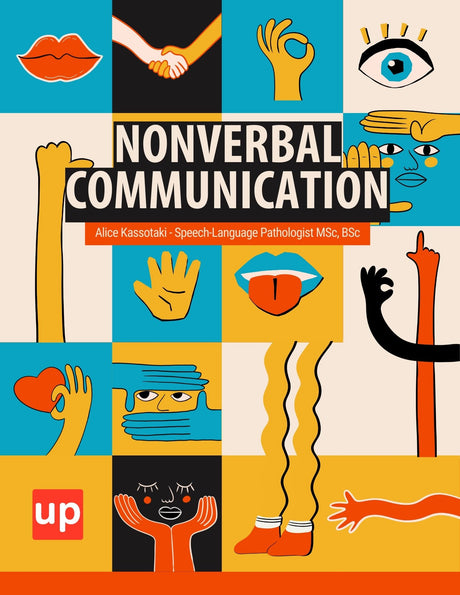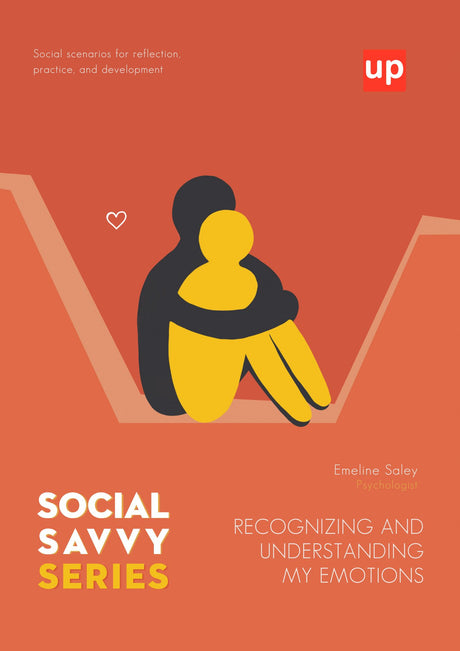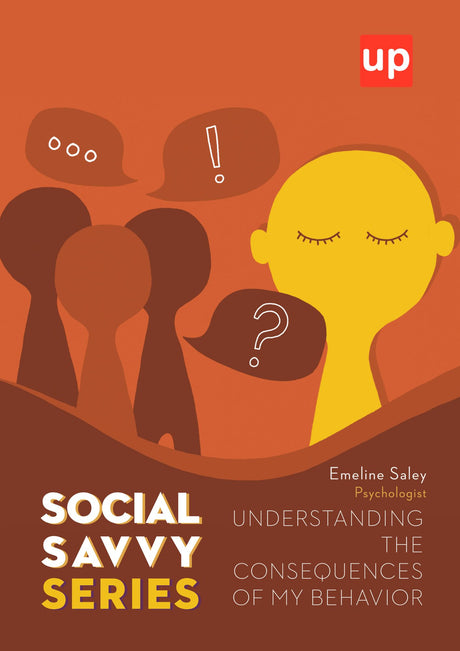Imagine residing in a world where the articulation of one's thoughts and needs is akin to an intricate puzzle, despite having an abundance of reflections to share. This scenario is the lived experience of individuals with nonverbal autism, a condition impairing the capability to communicate through spoken language and presenting unique challenges within social interactions. A profound comprehension of this form of autism is essential, not only to cultivate empathy but also to devise efficacious strategies to bridge the communication chasm.
Key Points
- Nonverbal autism involves challenges in spoken language development but does not imply an absence of communication; individuals often use alternative methods such as gestures, sign language, or augmentative communication systems to express themselves.
- Early diagnosis and tailored interventions focusing on receptive language, social communication skills, and expressive language development are crucial for improving communication outcomes and enhancing quality of life.
- Advances in assessment technologies, including eye-tracking and neurophysiological techniques, are expanding our understanding of nonverbal autism and enabling more personalized and effective intervention strategies.
Characteristics of Nonverbal Autism

Nonverbal autism is a subset of the autism spectrum characterized by little or no development of spoken language. Autistic people with nonverbal autism often find themselves navigating a world that relies heavily on verbal communication, which can create unique challenges and opportunities. The term “nonverbal” doesn’t imply an absence of communication; rather, it suggests that individuals use alternative methods to express themselves. Understanding nonverbal autism involves recognizing these diverse ways of communication and the associated behavioral patterns. Autism characteristics refer to a range of traits and behaviors—such as social communication differences, speech development variations, and other observable features—that can vary widely among autistic people and are key criteria in diagnosis and understanding.
The characteristics of nonverbal autism can vary widely, but commonly include minimal verbal abilities, challenges in receptive language understanding, and social interaction difficulties. It is important to distinguish between non verbal, minimally verbal, and preverbal classifications: non verbal refers to those who do not use speech, minimally verbal describes those who may use a few words or short phrases, and preverbal refers to children who have not yet developed speech. Minimally verbal children may have limited spoken words but can still possess some functional language, using meaningful communication for social or practical purposes. Each aspect presents its own set of challenges but also opportunities for alternative communication methods.
There is significant variability in language abilities among autistic people. Many children with nonverbal autism may use many words or alternative communication methods, such as gestures or sign language, even if they do not use spoken words. The presence or absence of spoken words is a key factor in assessment. Language abilities can differ widely, and understanding this heterogeneity is crucial for accurate diagnosis, assessment, and intervention planning.
Minimal verbal abilities
Minimal verbal abilities, sometimes referred to as 'minimally verbal,' are a defining feature of nonverbal autism. Individuals on this spectrum might use a limited number of words, if any, for communication. Some may use a few words or short phrases to communicate basic needs. Instead, they may rely on gestures, facial expressions, or other nonverbal means to convey their needs and emotions. This often requires their caregivers and educators to develop a heightened awareness of nonverbal cues to effectively communicate and cater to their needs.
The lack of verbal skills can sometimes be mistaken as a lack of understanding or willingness to communicate, though this is not the case. Nonverbal and minimally verbal individuals often understand more than they can express and may use alternative strategies such as picture exchange communication systems (PECS) or electronic devices to aid interaction. Each person’s ability varies, and many rely heavily on structured environments that support their mode of communication.
Understanding and supporting individuals with minimal verbal abilities involves recognizing these alternative methods and creating environments where they feel heard and understood. The development of functional language, where speech is used meaningfully for everyday communication, is an important milestone for individuals with minimal verbal abilities. This often requires patience and creative approaches to teaching and interaction, emphasizing nonverbal communication’s many forms.
Receptive language understanding
Receptive language understanding in individuals with nonverbal autism refers to their ability to comprehend spoken language or other forms of communication. Although they may not express themselves verbally, many can understand a significant amount of what is communicated to them. Assessing both receptive and expressive language abilities is important for understanding the full communication profile of individuals with nonverbal autism. This aspect highlights the importance of assuming competence and using approaches that support their understanding.
One key aspect is the use of clear, consistent language and visual supports. Visual aids, such as pictures or symbol boards, can greatly enhance understanding and provide context that words alone may not sufficiently convey. Structured and predictable environments also help in improving comprehension, as they reduce the cognitive load and help processing information more effectively.
Understanding receptive language in nonverbal autism requires caregivers and educators to focus on what the individual can comprehend rather than solely what they can express. This mindset shift ensures more effective communication strategies and better educational outcomes, fostering improved interaction and learning experiences.
Social interaction challenges
Social interaction challenges are common among those with nonverbal autism, stemming from difficulties in verbal and nonverbal communication. These challenges affect their ability to initiate or respond to social interactions, which can lead to feelings of isolation or misunderstanding by peers. Often, these difficulties arise from the back and forth nature of communication, which can be particularly hard for individuals with nonverbal autism to navigate. Recognizing these challenges is crucial in developing social skills and effective communication strategies.
Nonverbal individuals may have difficulty interpreting social cues such as tone of voice, facial expressions, or body language, making social interactions overwhelming or confusing. Providing structured social opportunities and using role-playing or guided peer interactions can help in navigating these scenarios. Visual and sensory supports can also aid in making social environments more accessible.
Creating supportive social environments involves emphasizing inclusivity and reducing barriers to interaction. By focusing on tailored social skills programs and fostering understanding among peers, individuals with nonverbal autism can find meaningful ways to connect with others and build relationships, enriching their social experiences and personal growth.
Diagnosis of Nonverbal Autism

Diagnosing nonverbal autism can be a complex and nuanced process, given the absence of verbal communication as a primary indicator. Nonverbal autism is a subset of autism spectrum disorder (ASD), a neurodevelopmental disorder characterized by differences in communication and behavior. Children with ASD may present with nonverbal autism across different age groups, including toddlers, preschoolers, school-age children, and adolescents. This condition requires much more than just observing the lack of spoken language; it involves comprehensive assessments to understand various developmental aspects. Early and accurate diagnosis is crucial as it opens the door to targeted interventions that can significantly improve the individual’s quality of life. Understanding the distinctive characteristics and employing suitable diagnostic tools are essential steps in this process, and assessment and intervention strategies may differ for various age groups, from toddlers to adolescents.
Early signs and symptoms
Early detection of nonverbal autism significantly impacts treatment and developmental outcomes. Parents and caregivers might first notice certain behavioral patterns that deviate from typical developmental milestones. Common early signs include a lack of babbling by the age of 12 months and a failure to make gestures, such as pointing or waving, by 14 months. Social engagement is also markedly different; children may avoid eye contact and appear indifferent to interactions with caregivers. Atypical eye gaze patterns are often observed in children with ASD as an early sign, indicating differences in nonverbal communication and social orientation. A noticeable delay in communication, both verbal and nonverbal, often prompts further investigation.
As children grow, the manifestations of nonverbal autism become more pronounced. Instead of using words, children might resort to alternative methods such as gestures or pictures to express needs or feelings. There may also be repetitive behaviors or intense interests in particular objects. Recognizing these early signs allows parents and healthcare providers to initiate conversations about developmental concerns and pursue a formal assessment if necessary.
Diagnostic tools and assessments
Diagnosing nonverbal autism involves a series of specialized tools and assessments designed to evaluate developmental and behavioral aspects. These tools are critical in providing an accurate diagnosis and are adapted to focus on nonverbal cues and behaviors. Standardized measures are used to classify and evaluate communication abilities in nonverbal children, ensuring reliable and consistent assessment. One common assessment is the Autism Diagnostic Observation Schedule (ADOS), which evaluates social interaction, play, and imaginative use of materials in structured and semi-structured scenarios.
Additionally, the Childhood Autism Rating Scale (CARS) helps differentiate autism from other developmental disorders. It assesses behaviors such as communication, social relationships, and use of objects. Nonverbal children are typically identified as those who do not use consistent spoken words during standardized tests. A thorough review of the child’s developmental history is also crucial, often relying on parent interviews to gather insight into early behaviors and interactions.
Professionals may also employ cognitive and adaptive behavior assessments to understand the individual’s abilities in nonverbal communication and daily living skills. Evaluating verbal ability is a key component of the diagnostic process. These evaluations provide a well-rounded view of the child’s functional capabilities and are integral in forming a comprehensive diagnostic profile.
Role of healthcare professionals
Healthcare professionals play a pivotal role in diagnosing and managing nonverbal autism. Pediatricians are typically the first to identify potential developmental concerns during routine check-ups. They may notice delays in communication milestones or atypical developmental patterns, prompting a referral to specialists.
Child psychologists and developmental pediatricians take the lead in conducting thorough assessments. Their expertise is crucial in interpreting diagnostic tools and integrating observational data with family reports. Additionally, speech-language pathologists contribute by evaluating nonverbal communication skills and recommending interventions to support communication development.
Post-diagnosis, these professionals continue to be key figures in devising individualized treatment plans. They often collaborate with educators and therapists to ensure a comprehensive approach to support. This multidisciplinary effort is essential in addressing the complex needs of individuals with nonverbal autism, aiming to enhance their communication abilities and overall quality of life. Research findings inform best practices in diagnosis and intervention planning, ensuring that approaches are grounded in evidence and tailored to the unique needs of nonverbal individuals.
Communication Strategies for Nonverbal Autism
Communication challenges are a significant aspect of nonverbal autism, requiring unique strategies to facilitate expression and interaction. Individuals with nonverbal autism often possess a variety of cognitive and emotional capacities but may lack the ability to express these verbally. Developing effective communication strategies is crucial for enhancing their quality of life and ensuring their needs are met. Children learn communication skills through modeling, imitation, and interactive experiences, which are essential for building foundational abilities.
These strategies include utilizing systems such as Augmentative and Alternative Communication (AAC), employing sign language and gestures, and integrating technology-based communication devices. Focusing on activities the child enjoys, such as pretend play or singing, can increase engagement and motivation to communicate. Each method provides a unique way of bridging the communication gap, allowing individuals to express themselves and engage more fully with their environment. Some interventions are based on the principles of verbal behavior, which emphasize teaching communication through behavioral techniques.
Augmentative and Alternative Communication (AAC) systems
Augmentative and Alternative Communication (AAC) systems are designed to support individuals who have difficulties with verbal communication. These systems encompass a variety of tools and techniques to help nonverbal individuals express their thoughts and interact with the world around them. AAC systems range from simple picture boards to more sophisticated speech-generating devices, each tailored to meet the specific needs of the individual.
AAC systems can be broadly categorized into two types: unaided systems, which do not rely on external tools, like sign language, and aided systems, which might include devices or picture boards. Picture based systems are a common form of AAC for individuals with nonverbal autism, providing visual representations to support communication. The choice of system depends on the individual’s specific needs and capacities. Introducing AAC systems into an individual’s daily routine can significantly enhance their ability to communicate, fostering better social interactions and personal autonomy.
An effective AAC system enables individuals with nonverbal autism to form connections they might otherwise find challenging. It fosters a sense of independence and improves their ability to convey emotions, needs, and desires. AAC systems can also support communication through written words for those who can recognize or produce text. Some methods, such as facilitated communication, are controversial and not widely recommended. By incorporating these systems, individuals can overcome barriers that impede communication, leading to improved psychological well-being and social participation.
Sign language and gestures
Sign language and gestures offer a dynamic approach to communication for those with nonverbal autism. These methods utilize the natural expressiveness of human movement, allowing individuals to convey their needs, emotions, and ideas without speech. For many, sign language serves as a first step towards more complex modes of communication, offering a foundation for further growth and interaction.
Gestures are innate forms of communication and can be used independently or in conjunction with sign language to enhance understanding. They offer practical ways for individuals to express basic needs and interact with caregivers and peers. Structured teaching of these methods encourages repeated practice, making communication more fluid over time.
The benefits of using sign language and gestures extend beyond simple communication. They can also enhance cognitive development by building associations between symbols and concepts. This form of communication promotes bonding with peers and family members, fostering social skills and emotional connections. As these skills develop, individuals with nonverbal autism can experience greater inclusion in everyday interactions.
Technology-based communication devices
Technology-based communication devices play an increasingly vital role in aiding individuals with nonverbal autism. These devices leverage technological advancements to provide personalized communication solutions, tailored to fit each individual’s unique needs. With innovations in this field, individuals have more options than ever to express themselves effectively and independently.
These communication aids range from basic speech-generating devices to complex tablets and apps customized with the user's preferred symbols, pictures, or text. Many devices feature user-friendly interfaces that make communication intuitive, even for individuals with limited motor skills. By focusing on the specific requirements of nonverbal users, these devices can accommodate a wide range of abilities and preferences.
Incorporating technology into communication strategies benefits social integration and boosts confidence for individuals with nonverbal autism. As users become proficient with their devices, they experience enhanced engagement with their surroundings and personal interactions. This technological empowerment can lead to greater autonomy, supporting lifelong learning and participation in various social and academic environments.
Supporting Autistic Children

Individualized education plans
Individualized education plans (IEPs) are essential tools for supporting autistic children throughout their educational journey. An IEP is a customized roadmap that addresses each child’s unique strengths, challenges, and learning needs, ensuring that children with autism spectrum disorder receive the right support to thrive in school. For children who experience challenges with nonverbal communication or expressive language skills, IEPs often incorporate strategies such as visual supports, sign language, or augmentative communication devices to enhance social communication skills and overall communication skills. These plans may also adapt classroom activities to match the child’s learning style, helping to build language skills and encourage the use of verbal language where possible. By fostering collaboration among teachers, therapists, and families, IEPs help children with autism develop critical social communication abilities and participate more fully in social interactions. Ultimately, individualized education plans empower autistic children to reach their academic and personal goals by providing the structure and support needed for meaningful progress in language, communication, and social development.
Family and caregiver involvement
Active family and caregiver involvement is a cornerstone of effective support for autistic children. Parents and caregivers play a pivotal role in reinforcing language development and social communication skills learned in therapy and educational settings, such as those provided by speech language pathology professionals. By participating in their child’s learning and therapy, families help children generalize communication skills across different environments, promoting functional communication and reducing the risk of intellectual disabilities. Caregivers also offer valuable insights into their child’s preferences, strengths, and challenges, which can inform more personalized approaches to autism diagnosis and intervention. Consistent support at home, combined with collaboration with educators and therapists, creates a nurturing environment where autistic children can build confidence in their communication skills and social interactions. This holistic approach ensures that children receive the encouragement and guidance they need to develop language and social communication abilities, both in educational settings and everyday life.
Accessing community resources
Connecting with community resources is a vital step in supporting autistic children and their families. Many communities offer a variety of services, such as respite care, support groups, and inclusive recreational programs, which can help families manage the challenges associated with autism spectrum disorders. These resources provide opportunities for autistic children to practice social skills, engage in group activities, and participate in language development experiences, such as reading groups or creative arts programs. Access to speech generating devices and alternative communication methods can further support children who benefit from nonverbal or augmentative communication. By engaging with local organizations and advocacy groups, families can find valuable information, build supportive networks, and access tools that enhance their child’s language and social development. Leveraging these community resources ensures that children with spectrum disorders receive comprehensive support, helping them build confidence, develop friendships, and thrive both inside and outside the classroom.
Novel Technologies in Assessment

In recent years, the assessment of nonverbal autism has been greatly enhanced by novel technologies. These advancements are crucial in understanding and managing the condition more effectively. Nonverbal autism presents unique challenges as individuals may have difficulty communicating their needs, feelings, or understanding of their surroundings. Terms such as 'nonspeaking autism' and 'non speaking autism' are used to describe individuals who do not use spoken language, and assessment approaches may differ for these subgroups. Consequently, advanced assessment tools have been developed to better identify these individuals and tailor interventions to their specific needs. New technologies in assessment focus on objective measurements and analysis that go beyond what traditional methods can achieve, thus opening new pathways for research and personalized care. A systematic review of assessment technologies can help identify best practices and gaps in current research.
Eye-tracking advancements
Eye-tracking technology has become a significant tool in assessing nonverbal autism. By observing and measuring eye movement and gaze patterns, researchers can gain insights into cognitive processes and engagement levels in individuals with autism. This non-invasive technique offers a window into how individuals perceive and interact with their environment, which is critical for designing appropriate interventions. Eye-tracking can help identify what captivates or distracts someone, thus informing strategies to enhance learning and communication. As this technology continues to evolve, it provides a deeper understanding of the visual and social processing differences inherent in nonverbal autism.
Neurophysiological techniques
Neurophysiological techniques such as electroencephalography (EEG) and functional magnetic resonance imaging (fMRI) are pivotal in assessing the neurological aspects of nonverbal autism. These methods allow researchers to explore the brain's structure and functional connectivity, offering insights into the biological underpinnings of autism. EEG provides information on brain wave patterns, which can highlight differences in how information is processed in the brains of individuals with nonverbal autism. Meanwhile, fMRI captures brain activity by detecting changes associated with blood flow, thus revealing areas of the brain that respond differently to various stimuli. These techniques not only enhance our understanding of autism's neurobiological basis but also contribute to developing targeted therapies and interventions.
Evaluating receptive language skills
Evaluating receptive language skills in individuals with nonverbal autism is crucial for developing effective communication strategies. Receptive language refers to the ability to understand information, which can be particularly challenging to assess in nonverbal individuals. Tools such as computerized assessments and direct observation methods measure language comprehension effectively, despite the lack of verbal responses. These assessments consider alternative communication forms, such as gestures and visual aids, to gain an accurate picture of an individual's understanding. This evaluation process is foundational in formulating communication aids and intervention plans that support an individual's ability to comprehend and interact with their environment, dramatically improving their quality of life and integration into society.
Language Outcomes and Intervention
Predictors of language development
Research suggests that several key factors influence language development in autistic children, shaping their language outcomes over time. One important predictor is the presence of few or no words in early childhood, as children who begin using spoken language at an early age often experience more positive language acquisition and communication skills. Social communication skills, such as making eye contact and using facial expressions, are also closely linked to the development of both verbal language and nonverbal communication abilities. Children who demonstrate strong social communication and engage in social interactions with peers and adults tend to develop more advanced language skills. Intervention strategies, including speech language pathology and the use of augmentative communication, play a crucial role in supporting language development, especially for those with communication disorders or developmental disabilities. By identifying these predictors early and providing targeted support, professionals can help autistic children build essential language skills, improve their ability to communicate effectively, and enhance their overall quality of life. This proactive approach not only supports language development but also fosters greater participation in social and educational settings, setting the stage for long-term success.
Conclusion
Nonverbal autism presents unique challenges in communication, social interaction, and language development. However, understanding the diverse characteristics and needs of individuals with nonverbal autism allows caregivers, educators, and healthcare professionals to implement effective strategies that foster communication and social engagement. Through the use of augmentative and alternative communication systems, sign language, gestures, and technology-based devices, individuals with nonverbal autism can express their thoughts and emotions in functional ways. Early diagnosis and tailored interventions that focus on receptive language, social communication skills, and expressive language development are essential to improving language outcomes and overall quality of life. Continued research and innovative assessment technologies hold promise for advancing our understanding and support of nonverbal autism, ensuring that every individual has the opportunity to communicate and connect meaningfully with the world around them.
Upbility offers valuable resources and support for individuals with nonverbal autism and their families. By providing access to expert guidance, personalized intervention strategies, and a community of understanding professionals, Upbility helps improve communication skills and overall quality of life. Their tools and services are designed to empower caregivers and educators with effective techniques tailored to each individual's unique needs, fostering progress in language development and social interactions.
Frequently Asked Questions (FAQ)
What is nonverbal autism?
Nonverbal autism is a form of autism spectrum disorder (ASD) where individuals have little to no spoken language. However, this does not mean they do not communicate; they often use alternative methods such as gestures, sign language, or augmentative and alternative communication (AAC) systems to express themselves.
Can individuals with nonverbal autism understand spoken language?
Yes, many individuals with nonverbal autism have receptive language skills, meaning they can understand spoken language even if they do not express themselves verbally. Assessing receptive language is crucial to tailor effective communication strategies.
What are common communication methods used by nonverbal individuals?
Common methods include sign language, picture exchange communication systems (PECS), speech-generating devices, gestures, and body language. These alternative communication tools help individuals express needs, emotions, and thoughts functionally.
How is nonverbal autism diagnosed?
Diagnosis involves comprehensive assessments using standardized tools like the Autism Diagnostic Observation Schedule (ADOS) and Childhood Autism Rating Scale (CARS), alongside developmental history and observation of communication behaviors. Professionals such as pediatricians, psychologists, and speech-language pathologists collaborate in the process.
What interventions help improve communication in nonverbal autism?
Tailored interventions focusing on receptive language, social communication skills, and expressive language development are effective. These may include speech-language therapy, AAC training, sign language instruction, and the use of technology-based communication devices.
Is early intervention important?
Absolutely. Early diagnosis and intervention significantly improve language outcomes and overall quality of life. Intervening during early childhood leverages critical periods of language acquisition and social development.
Can individuals with nonverbal autism develop spoken language?
Some individuals may develop spoken language over time, ranging from a few words to more complex speech. Others may continue to rely on alternative communication methods. Progress varies widely and depends on individual factors and interventions.
How can families support a nonverbal autistic child?
Families play a vital role by reinforcing communication strategies learned in therapy, using visual supports, encouraging social interactions, and collaborating with educators and therapists. Creating a supportive and structured environment fosters communication development.
What role do technology-based devices play?
Technology-based devices, such as speech-generating devices and communication apps, provide personalized, accessible ways for nonverbal individuals to communicate. They promote independence and social engagement when properly integrated into daily routines.
Where can I find resources and support for nonverbal autism?
Community organizations, speech therapy centers, autism advocacy groups, and online platforms offer resources, support networks, and guidance for families and caregivers. Accessing these can enhance intervention effectiveness and provide valuable assistance.
Original content from the Upbility writing team. Reproducing this article, in whole or in part, without credit to the publisher is prohibited.
References
-
O'Neill, M. (2023). Guidance From an Expert Physician on Nonverbal Autism. Ann & Robert H. Lurie Children's Hospital of Chicago. Retrieved from https://www.nm.org/healthbeat/healthy-tips/nonverbal-autism-what-it-means
-
American Psychiatric Association. (2013). Diagnostic and Statistical Manual of Mental Disorders (5th ed.). Arlington, VA: American Psychiatric Publishing.
-
Tager-Flusberg, H., & Kasari, C. (2013). Minimally Verbal School-Aged Children with Autism Spectrum Disorder: The Neglected End of the Spectrum. Autism Research, 6(6), 468–478. https://doi.org/10.1002/aur.1329
-
Lord, C., Rutter, M., DiLavore, P. C., & Risi, S. (2002). Autism Diagnostic Observation Schedule (ADOS). Los Angeles, CA: Western Psychological Services.
-
Schlosser, R. W., & Wendt, O. (2007). Effects of Augmentative and Alternative Communication Intervention on Speech Production in Children with Autism: A Systematic Review. American Journal of Speech-Language Pathology, 16(4), 283–296.
-
Griffin, W., & AFIRM Team. (2017). Functional Communication Training. Chapel Hill, NC: National Professional Development Center on Autism Spectrum Disorder.
-
Sam, A., & AFIRM Team. (2016). Picture Exchange Communication System (PECS). Chapel Hill, NC: National Professional Development Center on Autism Spectrum Disorder.
-
Freed, L., & Gilmore, H. (n.d.). Non-Speaking Autism: Improving Communication Skills. Behavioral Innovations. Retrieved from https://behavioral-innovations.com/blog/non-speaking-autism-improve-communication-skills-children-asd




